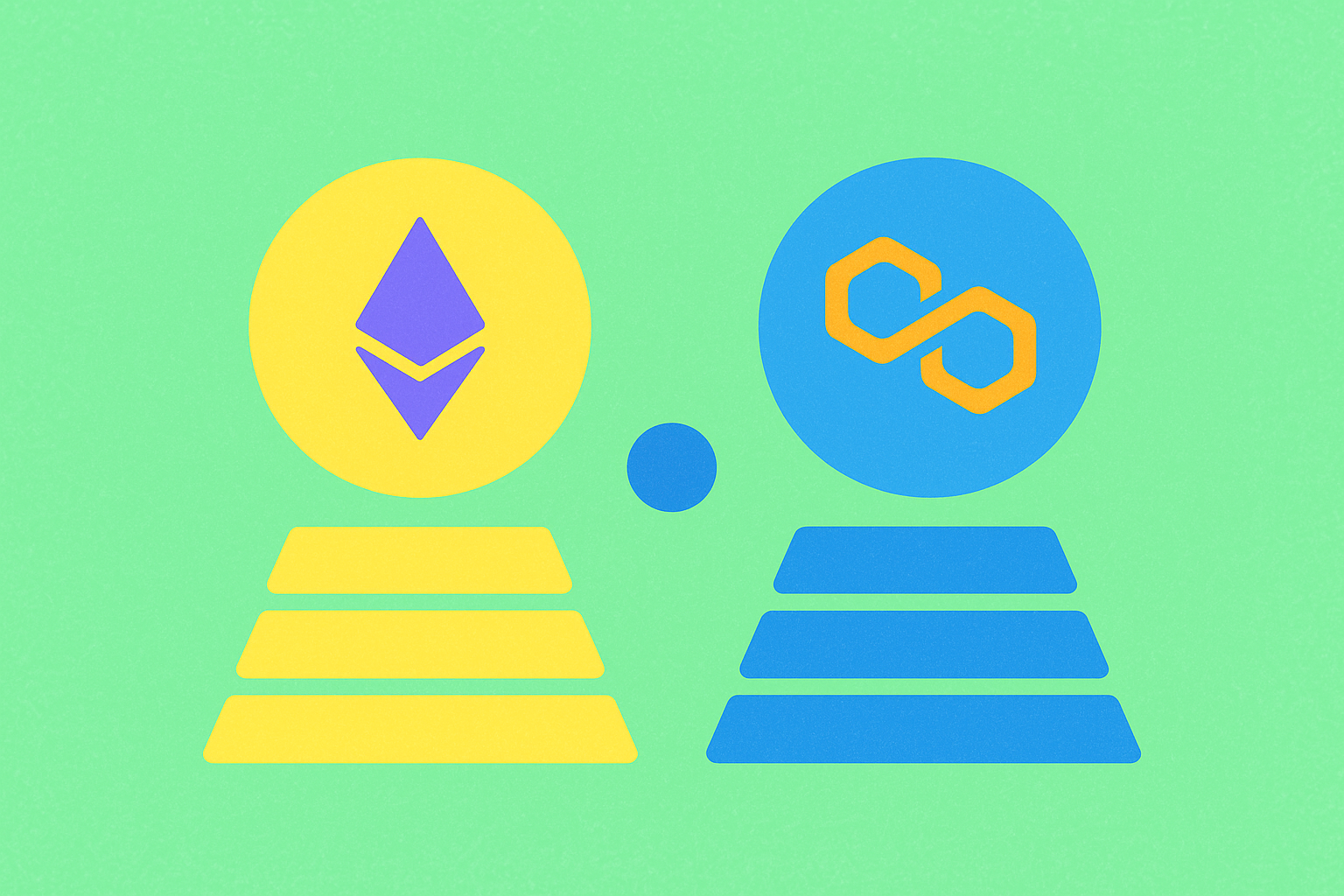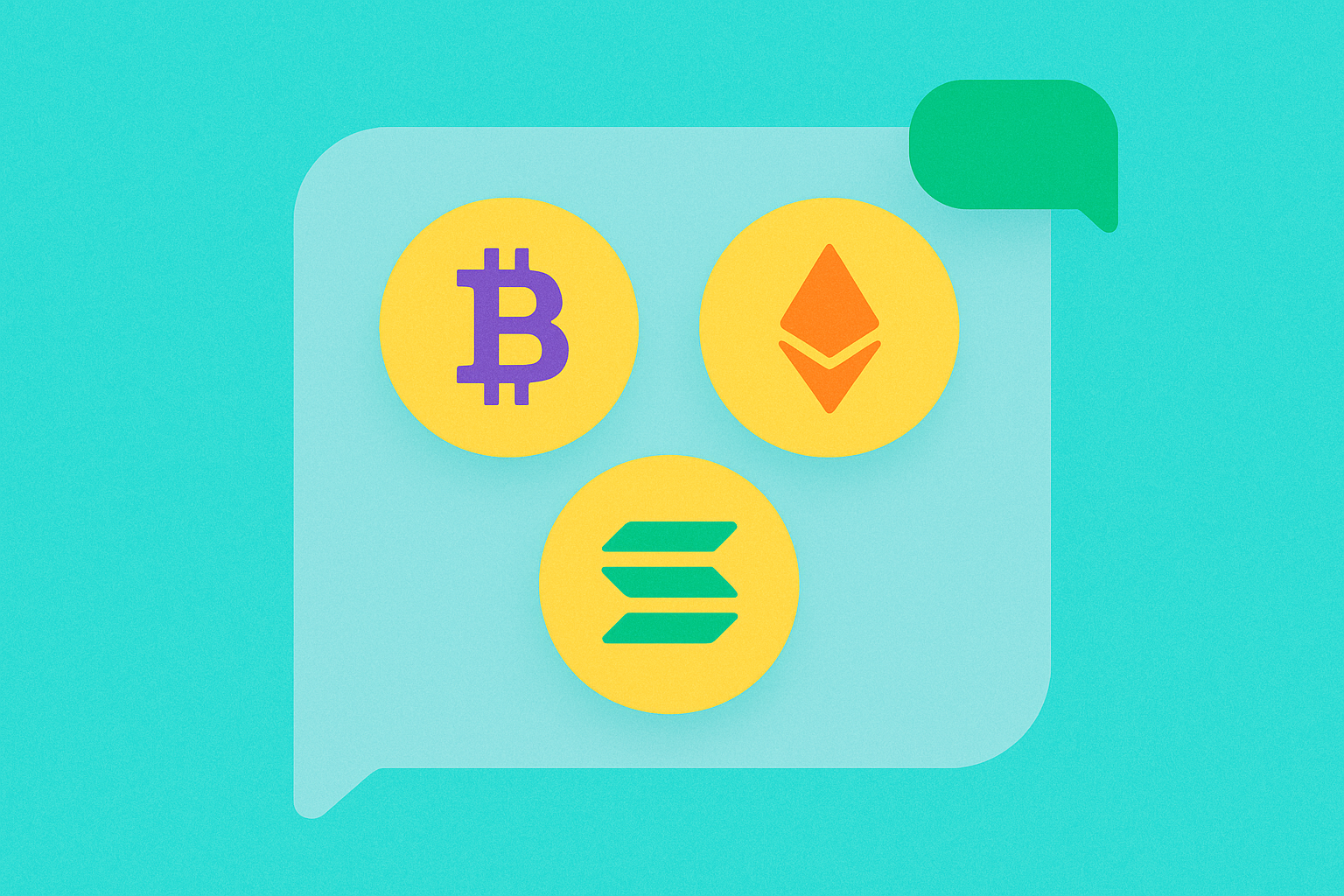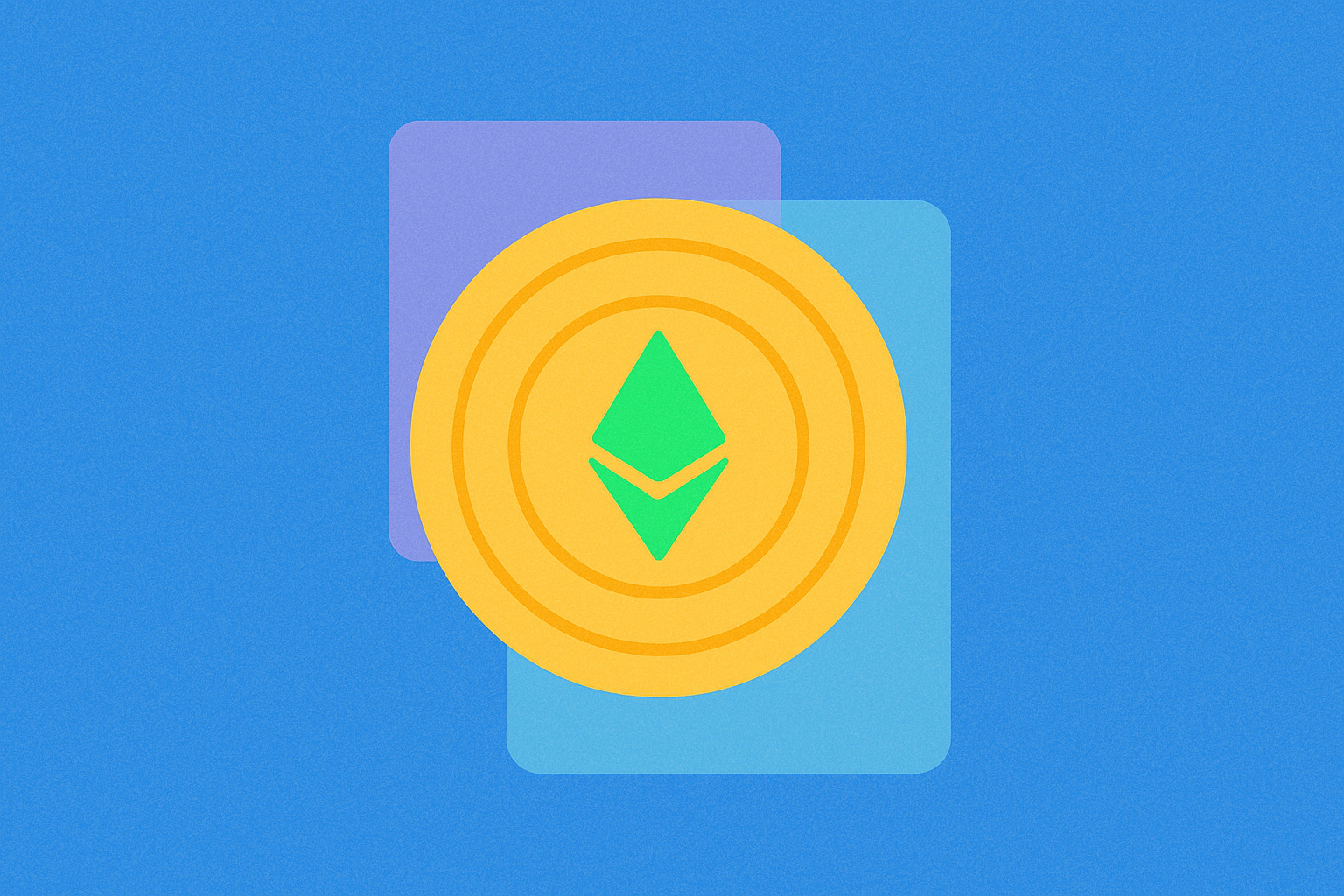A Jornada de Kaspa: Da Inovação BlockDAG ao Zumbido do Mercado

Kaspa é uma estrela em ascensão no mundo das criptomoedas, distinguida pela sua abordagem inovadora à tecnologia blockchain e uma comunidade em rápida expansão. Lançado silenciosamente no final de 2021, este projeto ganhou desde então um impulso sério graças a uma arquitetura blockDAG única que promete alta velocidade sem sacrificar a descentralização. Hoje, Kaspa destaca-se como um experimento ambicioso transformado em concorrente – uma plataforma que visa cumprir a visão original das criptomoedas como dinheiro digital eficiente e peer-to-peer. Neste blog, faremos uma análise aprofundada da história e origens da Kaspa, da visão dos seus fundadores, da tecnologia de ponta debaixo do capô e para onde poderá estar direcionado o seu valor nos próximos anos. Pelo caminho, também daremos uma vista de olhos no burburinho recente que colocou a Kaspa no radar de investidores e tecnólogos.
História e Origem do Kaspa
Cada projeto tem uma história, e a do Kaspa começa na academia e na inovação inicial da blockchain. O conceito do Kaspa surgiu da pesquisa para tornar as blockchains mais rápidas e escaláveis. Seu fundador líder, Dr. Yonatan Sompolinsky, é bem conhecido nos círculos cripto por coautoria do protocolo GHOST(uma descoberta referenciada no livro branco da Ethereum) e outras ideias avançadas de consenso. Depois de anos a refinar essas ideias, Sompolinsky e um pequeno grupo de entusiastas de blockchain lançaram formalmente a Kaspa em novembro de 2021. Importante, o lançamento da Kaspa foi justo - não houve moedas pré-minadas, nem alocações de tokens para investidores iniciais, e nem venda pública. Isso significava que qualquer pessoa poderia começar a minerar ou comprarKAS (moeda nativa da Kaspa)desde o primeiro dia, incorporando o ethos igualitário da descentralização.
O nome “Kaspa” em si sugere a visão central do projeto. Na antiga língua aramaica, “kaspa” significa “prata” ou “dinheiro,” uma referência à ideia de Kaspa sendo a prata digital do ouro digital do Bitcoin. O Bitcoin pioneirou o conceito de moeda descentralizada, mas evoluiu para uma reserva de valor; os criadores do Kaspa propuseram-se a construir uma rede mais focada em transações – algo gastável, rápido e acessível. Desde o início, o objetivo era seguir mais de perto o ideal de dinheiro entre pares original de Satoshi Nakamoto. Esta história de origem – uma mistura de teoria acadêmica, princípios de lançamento justo e um nome simbolizando moeda cotidiana – definiu o tom para o desenvolvimento e ethos da comunidade do Kaspa.
Fundadores e Visão da Kaspa
Sob a liderança do Dr. Sompolinsky, a equipa fundadora da Kaspa trouxe uma visão convincente e credenciais sólidas. Sompolinsky, um doutor em filosofia e investigador pós-doutorado (anteriormente em Harvard) não é apenas um empreendedor de criptomoedas, mas também uma figura respeitada na pesquisa blockchain. Seu trabalho em protocolos de blocosDAG (incluindoEspectro, Fantasma, e GhostDAG) lançou as bases para o design da Kaspa. Apoiando-o está uma equipe de desenvolvedores e criptógrafos qualificados que compartilham uma paixão por impulsionar a tecnologia blockchain para a frente. Isso inclui pesquisadores como Shai Wyborski, Michael Sutton e outros que foram contribuidores iniciais para o código e algoritmos de consenso da Kaspa. Juntos, eles imaginaram uma rede que poderia superar as limitações das blockchains anteriores.
A visão que impulsiona a Kaspa é frequentemente descrita como a “filosofia do Bitcoin com um design de próxima geração.” Em termos práticos, a equipa quer que a Kaspa seja o derradeiro sistema de dinheiro eletrónico peer-to-peer – o tipo de rede que o Bitcoin aspirava ser, mas com uma capacidade muito maior e usabilidade. O epíteto “prata digital” encapsula este objetivo: a Kaspa destina-se a ser transacionada com frequência (como a prata ou dinheiro na vida quotidiana), em vez de ser guardada como uma reserva de valor a longo prazo. Para alcançar isto, os fundadores enfatizaram a abertura e equidade. Evitaram qualquer pré-venda ou domínio de capital de risco, garantindo que a Kaspa crescesse organicamente através da sua comunidade de mineiros, desenvolvedores e utilizadores. abordagem orientada pela comunidadefomentou uma sólida base de seguidores e confiança no intregridade do projeto. Em essência, os fundadores da Kaspa não apenas se propuseram a criar mais uma criptomoeda, mas a realizar um antigo sonho cripto - uma moeda rápida, escalável e verdadeiramente descentralizada para uso diário.
Tecnologia BlockDAG da Kaspa e Características Únicas
O que realmente distingue Kaspa é o seu inovador Tecnologia blockDAG. As blockchains tradicionais (como Bitcoin ou Ethereum) adicionam blocos um a um em uma única cadeia, o que inerentemente limita a rapidez com que as transações podem ser processadas. Kaspa, por outro lado, usa uma estrutura de gráfico acíclico dirigido de bloco (blockDAG) que permite que vários blocos sejam criados e confirmados em paralelo. Em termos mais simples, a rede da Kaspa pode mastigar muitas transações ao mesmo tempo, em vez de alinhá-las em um único arquivo. Quando dois mineradores encontram um bloco quase ao mesmo tempo, Kaspa não precisa descartar um como "órfão" – em vez disso, ambos os blocos se juntam ao livro-razão em uma formação DAG semelhante à web. Esse design aumenta drasticamente a taxa de transferência e reduz o trabalho desperdiçado, abordando o gargalo de escalabilidade que assola as moedas de prova de trabalho anteriores.
Os números de desempenho são impressionantes. Atualmente, o protocolo do Kaspa produz um novo bloco a cada segundo, dando-lhe a capacidade de lidar com dezenas de transações por segundo com tempos de confirmação inferiores a dez segundos na prática. Para comparação, Bitcoingerencia aproximadamente 3-7 transações por segundo e Ethereumcerca de 15-20, muitas vezes com tempos de confirmação medidos em minutos. Kaspa já se orgulha de uma finalização mais rápida, e o roteiro não pára por aqui – os desenvolvedores têm como objetivo escalar para 10 blocos por segundo num futuro próximo e ambicionam atingir eventualmente100 blocos por segundo. Isso poderia equivaler a uma capacidade de processamento de milhares de transações por segundo, rivalizando com as redes de pagamento tradicionais. Crucialmente, tudo isso é alcançado enquanto se utiliza o mesmo mecanismo de segurança Proof-of-Work (PoW) que sustenta o Bitcoin, mas aprimorado pelo GhostDAGalgoritmo de consenso que ordena o blocoDAG de forma eficiente. O resultado é uma rede que é rápida e escalável, mas permanece descentralizada e segura. Na verdade, os arquitetos da Kaspa acreditam que estão perto de resolver o blockchain "trilema- encontrando o ponto ideal de escalabilidade, segurança e descentralização - através deste design inovador.
Além da velocidade, Kaspa traz outras características únicas para a mesa. Sua política monetária é codificada para escassez gradual, assim como a do Bitcoin, mas em um cronograma acelerado: a mineração as recompensas reduzem para metade a cada ano, reduzindo constantemente o novo fornecimento. Este cronograma agressivo de redução para metade significa que KAS poderia tornar-se mais escasso ao longo do tempo, apoiando potencialmente o seu valor se a procura crescer. O projeto também está a estender a funcionalidade para tornar a plataforma mais do que apenas um sistema de pagamento. Kaspa introduziu um padrão de token (denominado KRC-20) para permitir que outros tokens e projetos operem na sua blockchain, preparando o terreno para um ecossistema mais amplo. Embora os contratos inteligentes ainda não estejam ativos no Kaspa, a equipa planeia integrar contratos inteligentes nativos por volta de 2025. Isso permitiria aplicações descentralizadas (dApps) e serviços DeFi no Kaspa, transformando-o de uma moeda de pagamento rápida numa plataforma completa para finanças e além. Em resumo, a pilha tecnológica da Kaspa - processamento paralelo de blocos, confirmações rápidas, utilização eficiente de PoW, distribuição justa e extensibilidade futura - posiciona-a como uma das mais avançadas tecnologicamenteRedes de camada 1no espaço criptográfico.
Desempenho de Mercado e Perspetivas de Preço da Kaspa

Kaspa pode ter começado como um projeto discreto, mas seu desempenho no mercado nos últimos anos mostra um reconhecimento crescente. Nos meses seguintes ao seu lançamento em 2021, o KAS era negociado apenas a frações de um centavo, refletindo a fase experimental da rede. À medida que o desenvolvimento avançava e a palavra se espalhava, o preço começou a subir. No início de 2023, Kaspa ainda valia menos de um centavo, mas um rali na primavera daquele ano fez com que ele se destacasse. Em abril de 2023, o entusiasmo crescente levou o KAS a se aproximar da marca de 1 centavo e, em maio de 2023, ele brevemente disparou para cerca de ~$0.14. O verdadeiro ponto de viragem veio em 2024: no meio de um contexto mais amplo mercado de criptomoedasrecuo e zumbido crescente em torno da tecnologia da Kaspa, a moeda atingiu um novo recorde de sempreaproximadamente$0.21em agosto de 2024. Esta rápida ascensão — de um projeto de microcap para uma avaliação de vários bilhões de dólares — colocou a Kaspa no mapa. Naturalmente, a volatilidade seguiu-se; após esse pico, o preço corrigiu e, no início de 2025, a Kaspa tem negociado na faixa de cerca de $0.05 a $0.10por moeda. Mesmo a esses níveis, sua capitalização de mercado está na casa dos vários bilhões de dólares, colocando Kaspa entre ostop 50 criptomoedasglobalmente. Tal classificação é impressionante para um projeto que mal tem alguns anos.
Com este impulso em mente, muitos investidores e analistas estão olhando para o futuro do Kaspa em termos de valor. As previsões de preço para o KAS variam amplamente, sublinhando tanto a incerteza dos mercados de criptomoedas quanto as grandes esperanças depositadas neste projeto. As previsões levam em consideração a forte tecnologia e comunidade do Kaspa, mas também a natureza competitiva e imprevisível do setor de criptomoedas. Aqui está um resumo do que algumas previsões estão dizendo a curto e longo prazo:
2025: A curto prazo, até o final de 2025, as projeções conservadoras indicam que KAS permanecerá em torno do $0.10 to $0.20alcance se crescer de forma constante sem grandes avanços. Estas estimativas pressupõem que o Kaspa continua a desenvolver-se a um ritmo medido e acompanha o mercado em geral. No entanto, analistas mais otimistas apontam que, se o Kaspa atingir os seus marcos técnicos e conquistar uma adoção mais ampla, poderá subir mais alto - possivelmente atingindo$0.30 a $0.50ou até mesmo além. Num cenário particularmente otimista (por exemplo, se ocorrer uma listagem importante em uma exchange ou um boom de DeFi na Kaspa), alguns entusiastas especulam que o preço poderia se aproximar do marcar $1. Um resultado desses provavelmente exigiria um mercado de criptomoedas forte e o Kaspa se estabelecendo firmemente como uma rede de referência para transações rápidas.
2030: Olhando mais adiante para o final da década, a gama de previsões de preço do Kaspa se amplia significativamente. No extremo cauteloso, alguns observadores preveem que o KAS possa atingir cerca de $1 para $2até 2030, o que ainda representaria um crescimento substancial em relação aos níveis atuais, mas pressupõe que Kaspa enfrente concorrência e apenas uma adoção gradual. Essas metas de alcance mais baixo levam em consideração a possibilidade de que Kaspa permaneça como um jogador de nicho, mas sólido no espaço cripto. Por outro lado, projeções otimistas de longo prazo vislumbram Kaspa cumprindo sua promessa e alcançando o uso generalizado, o que poderia impulsionar o preço para oterritório de vários dólares. Os modelos otimistas colocam KAS no mesmo patamar de$3 a $5+até 2030, pressupondo que a Kaspa possa capturar uma parcela significativa das transações de criptomoedas globalmente. Vale ressaltar que essas altas cifras implicam que a Kaspa se tornaria uma das principais redes de criptomoedas em uso. Como em qualquer previsão de oito anos no mundo das criptomoedas, há bastante espaço para erros - avanços tecnológicos imprevistos, mudanças regulatórias ou oscilações de mercado podem alterar drasticamente o cenário. No entanto, o sentimento geral em muitas análises é que a trajetória da Kaspa é ascendente a longo prazo, mesmo que os números exatos diferem.
Claro, estas previsões são especulativas e devem ser encaradas com cautela. O caminho de mercado real da Kaspa dependerá de quão bem o projeto cumpre as suas promessas tecnológicas, de como a economia cripto evolui, e se a adoção do network da Kaspa no mundo real corresponde às expectativas. Ainda assim, o simples facto de vários analistas estarem a avaliar as perspetivas de 5 e 10 anos da Kaspa é um testemunho de quão rapidamente entrou na conversa como uma criptomoeda notável.
Zumbido recente e desenvolvimentos futuros
A rápida ascensão e realizações técnicas da Kaspa geraram considerável agitação na comunidade de criptomoedas, especialmente no último ano. Um dos desenvolvimentos mais comentados ocorreu no início de 2025 quando Coinbase, uma das maiores bolsas de criptomoedas, expandiu o suporte para Kaspa. Em fevereiro de 2025, a plataforma internacional da Coinbase listou um KAS mercado de futuros perpétuos, uma ação que imediatamente levantou o sentimento de mercado. A notícia de uma listagem na Coinbase (mesmo que de forma derivada) foi vista como uma validação da legitimidade da Kaspa e gerou esperanças de que listagens completas de spot possam seguir. Ao mesmo tempo, a comunidade tem estado agitada com especulações sobre a Binance - a Kaspa ainda não foi listada na maior bolsa do mundo, e rumores circulam de que isso poderá estar próximo se o crescimento da Kaspa continuar. Cada indício de interesse de grandes bolsas tende a impulsionar a alta do preço do KAS e a excitação nas redes sociais, destacando o olhar atento que os investidores estão mantendo sobre este projeto.
Além das notícias de troca, a Kaspa tem estado nas manchetes por seu desenvolvimento contínuo e parcerias. Os desenvolvedores do projeto hospedam atualizações regulares e sessões de Pergunte-me Qualquer Coisa, compartilhando progressos em marcos técnicos. No final de 2024, por exemplo, a equipe lançou um atualizaçãopreparando o terreno para a taxa de blocos da rede aumentar de 1 bloco por segundo para 10, mostrando progressos tangíveis em direção aos seus objetivos de escalabilidade. Há também uma parceria notável em andamento com o objetivo de tornar o Kaspa interoperável com o ecossistema Ethereum - o Kaspa está colaborando numa solução de Camada-2 compatível com a EVM que permitiria que contratos inteligentes no estilo Ethereum fossem executados ancorados à cadeia de blocos DAG rápida do Kaspa. Se bem-sucedido, isso poderia ligar o Kaspa com o mundo mais amplo de apps descentralizadas, atraindo novos utilizadores e casos de uso. Além disso, como mencionado anteriormente, contratos inteligentes nativos na mainnet do Kaspa estão planeados para 2025. Os desenvolvedores e membros da comunidade estão ansiosamente à espera desta funcionalidade, pois isso poderia desbloquear possibilidades como plataformas de finanças descentralizadas (DeFi) e projetos de NFT no Kaspa sem depender de cadeias externas.
A comunidade em torno da Kaspa também tem sido vibrante, contribuindo para o seu entusiasmo. Os entusiastas de criptomoedas em Reddite X (Twitter) discutem frequentemente os méritos do Kaspa, por vezes apelidando-o de “melhor Bitcoinou a verdadeira realização do que o Bitcoin poderia ter sido para transações diárias. Esse tipo de apelido, embora certamente hiperbólico, captura a paixão dos apoiadores da Kaspa e as altas expectativas que eles têm. Os encontros e fóruns online dedicados à Kaspa têm crescido, e até um livro sobre a jornada do projeto ('Kaspa: De Fantasma a Cavaleiro') foi publicado, refletindo o profundo interesse em seu desenvolvimento. Toda essa atenção — desde grandes movimentos de câmbio até o evangelismo de base — tem se combinado para manter a Kaspa em destaque.
À medida que o Kaspa avança, o caminho à frente parece promissor e desafiador. Por um lado, o projeto tem um momentum claro: uma base técnica sólida, uma equipe comprometida e um nome cada vez mais reconhecido na indústria. O seu roadmap de atualizações e novas funcionalidades ao longo de 2025 e 2026 sugere que as capacidades do Kaspa continuarão a expandir. Por outro lado, o Kaspa deve continuar a provar que a sua abordagem de blocoDAG pode funcionar em escala sem problemas, e enfrenta a tarefa constante de converter vantagens tecnológicas em adoção real pelos usuários. Se conseguir atrair mais aplicativos, exchanges e usuários para o seu ecossistema, o Kaspa poderá realmente cimentar-se como uma rede de criptomoedas de primeira linha. De qualquer forma, os próximos anos serão cruciais. De um projeto pouco conhecido nascido de pesquisa acadêmica para umcriptomoeda de vários bilhões de dólaresO percurso do concorrente, Kaspa, até agora tem sido notável - e a sua história ainda está a desenrolar-se. Esta combinação de inovação, visão e crescente entusiasmo do mercado fazem do Kaspa um projeto a observar de perto à medida que o cenário das criptomoedas evolui.

Cripto Redemption Arc (CRA): Uma Revolução Impulsionada Pela Comunidade Contra a Manipulação do Mercado

MoonDAO: Força Motriz Descentralizada para o Desenvolvimento da Base Lunar

O que é DAO? Análise das Tendências de Desenvolvimento e Casos de Aplicação em 2025

Protocolo da Humanidade: Revolucionando a Verificação de Identidade Web3 em 2025

Lista DAO: Lógica Central Revolucionária & Inovação DeFi Explicada

MYX Finance: Revolucionando o DeFi com um Modelo Inovador de Duplo Token

Guia para Transferência de Ativos para a Rede Polygon PoS

Guia Prático para Ligar à Rede Polygon

Explorar Tap Crypto: O Guia Essencial para Iniciantes em Transações Web3

Guia Simplificado para Compreender o Ethereum Name Service (ENS)

Explorar a Blockchain Aptos: Guia Completo
